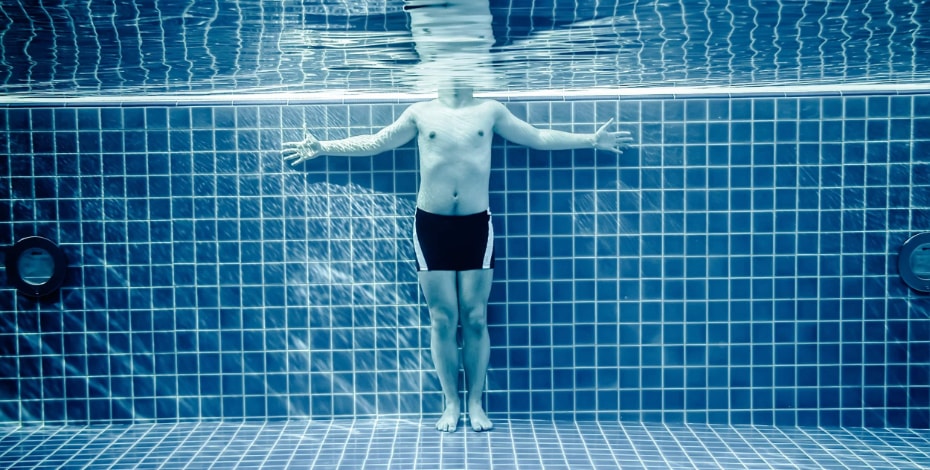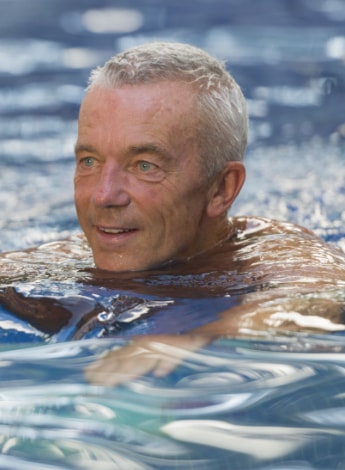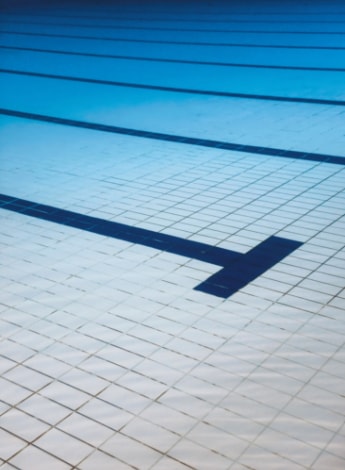
Five facts: aquatic

Sarah Milne, Samantha Bell, Sophie Heywood, Miriam Fletcher and Renae McNamara contribute five discussion points about aquatic physiotherapy.
1. Intensive aquatic and land physiotherapy may improve function in people with degenerative ataxia
The degenerative ataxias are a group of disorders associated with degeneration of the cerebellum. A universal feature is a progressive decline in function and mobility secondary to ataxia. There is no pharmacological treatment with conclusive effects to alter disease progression. However, there is growing evidence demonstrating that physiotherapy improves function, balance and ataxia symptoms for both ambulant and non-ambulant people with degenerative ataxia (Milne et al 2018).
Beneficial physiotherapy interventions include intensive coordination training, balance exercises with and without biofeedback, video games, sensory stimulation and aquatic physiotherapy. However, combining these interventions into a holistic and intensive program over a period of greater than six weeks may provide the greatest benefits to physical function (Milne et al 2018, Ilg et al 2009).
Aquatic physiotherapy can address the many areas of impairment in degenerative ataxia including postural control, sitting balance, strengthening, dynamic functional mobility and cardiovascular fitness (Milne et al 2018). The pool can facilitate enjoyable and therapeutic exercise for clients with both high and low levels of function. Care is required when clients mobilise around the pool due to slippery surfaces. However, aquatic physiotherapy is ideal for targeting cerebellar-specific rehabilitation, such as independent repetitive practice, challenging balance and trial-and-error-based learning (Kelly & Shanley 2016).
References
1. Milne SC et al. Rehabilitation for Individuals With Genetic Degenerative Ataxia: A Systematic Review. Neurorehabilitation and Neural Repair. 2017;31(7):609-622.
2. Milne SC, Corben LA, Roberts M, et al. Can rehabilitation improve the health and well-being in Friedreich's ataxia: a randomized controlled trial? Clinical Rehabilitation. 2018;32(5):630-643.
3. Ilg W, Synofzik M, Brotz D, Burkard S, Giese MA, Schols L. Intensive coordinative training improves motor performance in degenerative cerebellar disease. Neurology. 2009;73(22):1823-1830.
4. Kelly G, Shanley J. Rehabilitation of ataxic gait following cerebellar lesions: Applying theory to practice. Physiotherapy Theory and Practice. 2016;32(6):430-437.
2. Aquatic plyometric exercise is an effective and enjoyable option for people with chronic stroke
People living with chronic stroke typically have low levels of physical activity when compared to their age-matched peers (Ivey et al 2005, Dean et al 2001), with slow walking speed contributing to a lack of community participation (Perry et al 1995, Patia & Shumway-Cook 1999).
Decreased muscle power is associated with slower walking speed and greater risk of falls (Bean et al 2010, Kuo et al 2006). Finding ways to exercise at sufficient intensity to improve lower limb strength, power and gait speed after stroke can be difficult. Two small, recent pilot studies showed that land-based plyometrics was safe and effective (Morgan et al 2015, Hendry et al 2018) but aquatic plyometrics for people with stroke has not been investigated.
The aquatic environment offers two potential advantages. Firstly, the effect of buoyancy offers unrestricted body weight support during exercise and secondly, the forces during aquatic plyometric exercise increase efficiency and reduce post-exercise soreness (Hall et al 2008, Triplett et al 2009).
In our study (Bell 2018), three men with chronic stroke completed twice weekly aquatic plyometric exercise classes for four weeks. All three found the program effective and enjoyable and none reported any post-exercise soreness. Each participant showed positive improvements in gait speed, muscle power and strength but the changes were not maintained at four- week follow up. Aquatic plyometrics may be an effective and enjoyable way to increase exercise participation in people with stroke.
References
1. Ivey F, Macko R, Ryan A, Hafer-Macko C. Cardiovascular health and fitness after stroke. Topics in Stroke Rehabilitation. 2005;12(1):1-16.
2. Dean CM, Richards CL, Malouin F. Walking speed over 10 metres overestimates locomotor capacity after stroke. Clinical Rehabilitation. 2001;15(4):415-21
3. Perry J, Garrett M, Gronley JK, Mulroy SJ. Classification of walking handicap in the stroke population. Stroke. 1995;26(6):982-9
4. Patia A, Shumway-Cook A. Dimensions of Mobility: Defining the Complexity and Difficulty Associated with Community Mobility. Journal of Aging and Physical Activity 1999;7(1).
5. Bean JF, Kiely DK, LaRose S, Goldstein R, Frontera WR, Leveille SG. Are changes in leg power responsible for clinically meaningful improvements in mobility in older adults? Journal of the American Geriatrics Society. 2010;58(12):2363-8.
6. Kuo G, Leveille SG, Yen F, Chai F, Chang F, Bean JF. Exploring how peak leg power and usual gait speed are linked to late-life disability: Data from the National Health and Nutrition Examination Survey American Journal Of Physical Medicine & Rehabilitation. 2006;85(8):650-8.
7. Morgan P, Embry A, Perry L, Holthaus K, Gregory CM. Feasibility of lower-limb muscle power training to enhance locomotor function poststroke. Journal of Rehabilitation Research & Development. 2015;52(1):77-84
8. Hendry G, Clark R, Holland A, Mentiplay BF, Davis C, Williams G. Feasibility of Ballistic Strength Training in Subacute Stroke: A Randomised, Controlled, Assessor-Blinded Pilot Study. Archives of Physical Medicine & Rehabilitation. 2018
9. Hall J, Swinkels A, Briddon J, McCabe C. Does Aquatic Exercise Relieve Pain in Adults With Neurologic or Musculoskeletal Disease? A Systematic Review and Meta-Analysis of Randomized Controlled Trials. Archives of Physical Medicine & Rehabilitation. 2008;89(5):873-83.
10. Triplett T, Colado J, Benavent J, Alakhdar Y, Gonzalez J, Tella V. Concentric and Impact Forces of Single-Leg Jumps in an Aquatic Environment versus on Land. Medicine & Science in Sports & Exercise. 2009;41(9):1790-6
Bell, S (2018) "Feasibility of aquatic power training to improve mobility in persons with stroke: a case series" Honours Thesis, School of Allied Health, Australian Catholic University, McCauley at Banyo Campus.
3. Aquatic exercise is effective in improving quality of life, pain and function for people with knee osteoarthritis

Aquatic exercise is equally as effective as land-based exercise in improving quality of life, pain and function for people with knee osteoarthritis (Waller et al 2014, Barker et al 2014). Successful aquatic programs include two sessions per week for at least six weeks, target strengthening of hip and knee extensors and include moderate-intensity aerobic exercise and weight-bearing exercises (Monash University Health Services Unit 2014).
Reduced weight-bearing load in lower limb closed-kinetic chain exercises due to buoyancy (related to the depth of immersion) may allow people with knee pain, leg weakness or significant deconditioning an opportunity to successfully complete functional exercises. Both vertical ground reaction force and reported pain are significantly less with squats in water compared to on land in older adults with knee osteoarthritis (Heywood et al 2019).
Squats in water at slow speeds have the lowest force during the middle range of the exercise when the knee is likely to be in greatest flexion as the trunk is lowered into the water.
Slow squats in water may address functional knee range of movement, coordination or confidence with movement. Due to increases in drag force, maximal speed squats produce significantly greater force compared to slow speeds and may hold potential for low-load, high-velocity power training in the pool for people with knee osteoarthritis.
References
Barker AL, Talevski J, Morello RT, Brand CA, Rahmann AE, Urquhart DM. Effectiveness of aquatic exercise for musculoskeletal conditions: a meta-analysis. Arch Phys Med Rehabil. 2014 Sep 1;95(9):1776-86.
Edlich R, Bioengineering principles of hydrotherapy. J Burn Care Rehabil.1987;8:580-584.
Health Services Research Unit. A review of best-practice evidence for warm water exercise for people with musculoskeletal conditions. 2014. Monash University, Melbourne. www.msk.org.au/wp-content/uploads/2018/07/Waves-occasional-paper_FINAL_11-02-2014_formatted-2.pdf
Heywood et al. Force during functional exercises on land and in water in older adults with and without knee osteoarthritis: implications for rehabilitation. The Knee. 2019 (in press).
Waller B et al. Effect of therapeutic aquatic exercise on symptoms and function associated with lower limb osteoarthritis: systematic review with meta-analysis. Phys Ther. 2014;94:1383-1395.
4. Annual review of health screening, emergency policy and procedures and risk assessments is recommended
Working in a pool environment throws up some additional considerations related to safety. Guidelines for aquatic physiotherapists are available to ensure that safety and professional standards are maintained and that water is used as an effective therapy and exercise medium (APA 2015).
All clients should have an assessment prior to commencing aquatic physiotherapy to inform the clinical reasoning for their intervention and to measure progress. This assessment should also involve a health screening to identify potential precautions or contraindications for immersion. The screening can cover infectious conditions, level of assistance required for transfers and mobility, medical history, current medications and health status with regard to the physiological effects of immersion and exercise, ability to communicate, risk related to cognition and behaviour, anxiety and fear of water or swimming ability and the assessment of falls risk. This screening can help inform a management plan to reduce risks.
Emergency policies and procedures should be formulated that are specific to each facility and aquatic physiotherapy service and include emergency procedures for someone being unconscious in the water, staff training and competencies, staff orientation, screening, written information provided, pool safety explanation or orientation and water quality testing and chemicals, if managed by physiotherapy staff.
5. Water-based exercise improves exercise capacity in people with chronic respiratory and cardiac disease

The unique features of water and immersion, including hydrostatic pressure, buoyancy, and turbulence forces, provides a supportive and challenging exercise environment for people with cardiorespiratory conditions, particularly those with physical impairments and pain who find exercising difficult on land.
Immersion in water has a number of beneficial effects on the cardiorespiratory system. Hydrostatic pressure related to depth of immersion and water temperature produces cardiorespiratory benefits. Immersed to neck depth, central movement of peripheral blood increases stroke volume and cardiac output (Boussuges 2006). Increased lung perfusion facilitates better oxygen absorption (Cole & Becker 2006).
Aquatic exercise has similar benefits to land- based pulmonary rehabilitation in people with chronic obstructive pulmonary disease (COPD) (Waddel et al 2004). There are significantly greater improvements following aquatic exercise compared to land-based exercise in people with COPD with physical comorbidities such as obesity and musculoskeletal conditions (McNamara et al 2013). Benefits of aquatic exercise in people with stable heart failure are similar to land-based exercise (Adsett et al 2015). Aquatic exercise is safe with no serious adverse events reported.
People with cardiorespiratory conditions need to be pre-screened prior to water immersion, and monitored, particularly their dyspnoea, during aquatic therapy (APA 2015).
References
Adsett JA, Mudge AM, Morris N, Kuys S, Paratz JD. Aquatic exercise training and stable heart failure: a systematic review and meta-analysis. International Journal of Cardiology. 2015; 186: 22-28.
https://australian.physio/sites/default/files/tools/Aquatic_Physiotherapy_Guidelines.pdf
Boussuges A. Immersion in thermoneutral water: effects on arterial compliance. Aviat Space Environ Med. 2006;77:1183-7.
Cole A, Becker B. Comprehensive Aquatic Therapy. 2006. Butterworth-Heinemann, 2006.
McNamara RJ, McKeough ZJ, McKenzie DK, Alison JA. Water-based exercise in COPD with physical comorbidities: a randomised controlled trial. Eur Respir J 2013;41:1284–1291.
Wadell K, Sundelin G, Henriksson-Larsen K, Lundgren R. High intensity physical group training in water – an effective training modality for patients with COPD. Respir Med 2004;98:428–438.
Dr Sarah Milne, APAM, is coordinating a national randomised controlled trial examining the effects of rehabilitation for people with degenerative ataxia, through the Murdoch Children’s Research Institute. Sarah is employed clinically at Monash Health where she has worked in subacute aquatic physiotherapy and neurological physiotherapy.
Samantha Bell graduated in 2018 with first class honours from the Australian Catholic University. She is a new graduate physiotherapist at The Prince Charles Hospital and has aspirations to continue her research into aquatic plyometric training in people with neurological conditions
Sophie Heywood, APAM, is completing her PhD in closed-kinetic chain exercise in water compared to on land and is the Australian representative to the WCPT Aquatic group. She works at St Vincent’s Hospital, the University of Melbourne and at the Melbourne Sports Medicine Centre.
Miriam Fletcher, APAM, is the national chair of the APA Aquatic Group and the principal physiotherapist at Clarence Joint Therapy, Hobart, which incorporates aquatic physiotherapy. She has more than 30 years of experience in aquatic physiotherapy.
Dr Renae McNamara, APAM, is the pulmonary rehabilitation coordinator at the Prince of Wales Hospital, Sydney, and a Clinical Research Fellow at The University of Sydney and Woolcock Institute of Medical Research. She completed her PhD in water-based exercise for people with COPD.
© Copyright 2025 by Australian Physiotherapy Association. All rights reserved.





